Exodus 34
Read the Text
KJV
King James Version
NRSV
New Revised Standard Version
NIV
New International Version
LEB
Lexham English Bible
HEB
Hebrew Bible
ASV
American Standard Version
NET
New English Translation
Summary
Moses creates new stone tablets by hand and he stays on Mount Sinai for forty days communing with the Lord. The Lord reveals His law again, and He again covenants with Israel.
| KJV | JST |
|---|---|
| (1) And the Lord said unto Moses, Hew thee two tables of stone like unto the first: and I will write upon these tables the words that were in the first tables, which thou brakest. | (1) And the Lord said to Moses, Hew thee two other tables of stones like unto the first, and I will write upon them also the words of the law according as they were written at the first on the tables which thou breakest. But it shall not be according to the first, for I will take away the priesthood out of their midst. Therefore my holy order and the ordinances thereof shall not go before them, for my presence shall not go up in their midst lest I destroy them. But I will give unto them the law as at the first, but it shall be after the law of a carnal commandment. For I have sworn in my wrath that they shall not enter into my presence, into my rest, in the days of their pilgrimage. |
| (2) And be ready in the morning, and come up in the morning unto mount Sinai, and present thyself there to me in the top of the mount. | (2) Therefore do as I have commanded thee and be ready in the morning, and come up in the morning unto mount Sinai, and present thyself there to me in the top of the mount. |
| (4) And he hewed two tables of stone like unto the first; and Moses rose up early in the morning, and went up unto mount Sinai, as the Lord had commanded him, and took in his hand the two tables of stone. | (4) And Moses hewed two tables of stone like unto the first, and he rose up early in the morning, and went up unto mount Sinai, as the Lord had commanded him, and took in his hand the two tables of stone. |
| (7) Keeping mercy for thousands, forgiving iniquity and transgression and sin, and that will by no means clear the guilty; visiting the iniquity of the fathers upon the children, and upon the children’s children, unto the third and to the fourth generation. | (7) Keeping mercy for thousands, forgiving iniquity and transgression and sin—and that will by no means clear the rebellious—visiting the iniquity of the fathers upon the children, and upon the children’s children, unto the third and to the fourth generation. |
| (14) For thou shalt worship no other god: for the Lord, whose name is Jealous, is a jealous God: | (14) For thou shalt worship no other god, for the Lord, whose name is Jehovah, is a jealous God.” |
| (35) And the children of Israel saw the face of Moses, that the skin of Moses’ face shone: and Moses put the veil upon his face again, until he went in to speak with him. | (35) And the children of Israel saw the face of Moses, that the skin of Moses’ face shone. And Moses put the veil upon his face again until he went in to speak with the Lord. |
Commentary
Bible Central Commentary
These free resources were developed for use in the free ScripturePlus app. Many of the contributors are professors of religion and ancient scripture at Brigham Young University.
Historical Commentaries
Many of the commentaries below are in the public domain and were authored over 100 years ago. In many cases, they do not reflect the findings of modern scholarship, but they may be helpful for understanding the history of biblical scholarship.
Videos
Watch selected videos on this chapter of the Bible to enhance your study. Note: Not all videos included come from a Latter-day Saint perspective. Inclusion on this list should not imply endorsement for all content.
The Three Pilgrimage Festivals (Exodus 34)
Book of Mormon Central
Understanding Feast of Tabernacles or Sukkot
Messages of Christ
Understanding Pentecost and the Feast of Weeks
Messages of Christ
Overview: Exodus 19-40
BibleProject
The Book of Exodus - Part 2
BibleProject
Historical Settings
Time
*All Dates Are Approximate, according to the narrative of the Bible. These dates may reflect literary significance as opposed to the precise dates of history.
See Biblical Chronology- 1446 BC
Further Reading
Book of Mormon Central, “Why Did Jesus Allude to the Priestly Blessing in Numbers 6? (3 Nephi 19:25),” KnoWhy 212 (October 19, 2016).
Book of Mormon Central, “Why Does the Book of Mosiah Refer to the Exodus Narrative? (Mosiah 11:27),” KnoWhy 416 (May 16, 2019).
Book of Mormon Central, “What the Exodus Teaches Us about the Atonement (Alma 36:28),” KnoWhy 419 (March 27, 2018).
Daniel L. Belnap, “‘How Excellent is Thy Lovingkindness’: The Gospel Principle of Hesed,” in The Gospel of Jesus Christ in the Old Testament (Provo, UT: Religious Studies Center, Brigham Young University, 2009), 170–186.
Guy L. Dorius, “Integrity: From Sinai to Silicon Valley,” in Moral Foundations: Standing Firm in a World of Shifting Values, ed. Douglas E. Brinley, Perry W. Carter, and James K. Archibald (Provo, UT: Religious Studies Center, Brigham Young University, 2008), 117–128.
Amy B. Hardison, “Theophany on Sinai,” in Ascending the Mountain of the Lord: Temple, Praise, and Worship in the Old Testament, ed. Jeffrey R. Chadwick, Matthew J. Grey, and David Rolph Seely (Salt Lake City: Deseret Book; Provo, UT: Religious Studies Center, Brigham Young University 2013), 218–231.
George A. Horton Jr., “Insights into Exodus, Leviticus, Numbers, and Deuteronomy,” in The Joseph Smith Translation: The Restoration of Plain and Precious Things, ed. Monte S. Nyman and Robert L. Millet, (Provo, UT: Religious Studies Center, Brigham Young University, 1985), 71–88.
Paul Y. Hoskisson, “The Plan of Salvation in the First Six Books of the Old Testament,” in The Gospel of Jesus Christ in the Old Testament (Provo, UT: Religious Studies Center, Brigham Young University, 2009), 48–66.
L. Michael Morales, “The Tabernacle: Mountain of God in the Cultus of Israel,” in Ancient Temple Worship: Proceedings of The Expound Symposium 14 May 2011, ed. Matthew B. Brown, Jeffrey M. Bradshaw, Stephen D. Ricks, and John S. Thompson (Orem, UT: The Interpreter Foundation; Salt Lake City: Eborn Books, 2014), 27–70.
Russel M. Nelson, “Remnants Gathered, Covenants Fulfilled,” in Sperry Symposium Classics: The Old Testament, ed. Paul Y. Hoskisson (Provo and Salt Lake City: Religious Studies Center, Brigham Young University, and Deseret Book, 2005), 1–17.
Donald W. Parry, “Sinai as Sanctuary and Mountain of God,” in By Study and Also by Faith, ed. John M. Lundquist and Stephen D. Ricks, 2 vols. (Salt Lake City: Deseret Book; Provo, UT: FARMS, 1990), 1:482–500.
Daniel C. Peterson, “Not Joseph’s, and Not Modern,” in Echoes and Evidences of the Book of Mormon, ed. Donald W. Parry, Daniel C. Peterson, and John W. Welch (Provo, UT: FARMS, 2002), 191–229.
John S. Thompson, “The Context of Old Testament Temple Worship: Early Ancient Egyptian Rites,” in Ascending the Mountain of the Lord: Temple, Praise, and Worship in the Old Testament, ed. Jeffery R. Chadwick, Matthew J. Grey, and David Rolph Seely (Salt Lake City: Deseret Book; Provo, UT: Religious Studies Center, Brigham Young University, 2013), 156–183.
Bruce T. Verhaaren, “Ten Commandments,” in Encyclopedia of Mormonism, ed. Daniel H. Ludlow, 4 vols. (New York: MacMillan Publishing, 1992), 4:1469–1470.
John W. Welch and Greg Welch, 1 Nephi and the Exodus (Provo, UT: FARMS, 1999).
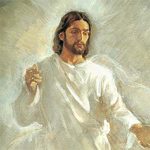
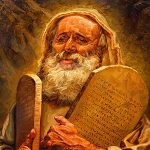

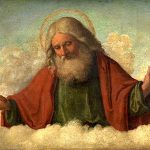
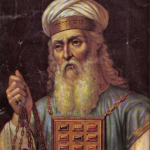


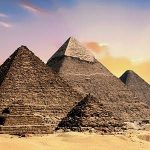
Complete Commentary on the Whole Bible
Matthew Henry (1706)
Commentary on the Bible
Adam Clarke (1831)
Expository Notes of Dr. Thomas Constable
Thomas Constable
Rashi’s Commentary
Rashi (Shlomo Yitzchaki)
Notes on the Bible
Albert Barnes (1834)
Exposition of the Entire Bible
John Gill (1746–63)
Biblical Commentary on the Old Testament
Carl Friedrich Keil and Franz Delitzsch (1857–78)
Explanatory Notes on the Whole Bible
John Wesley (1754–65)